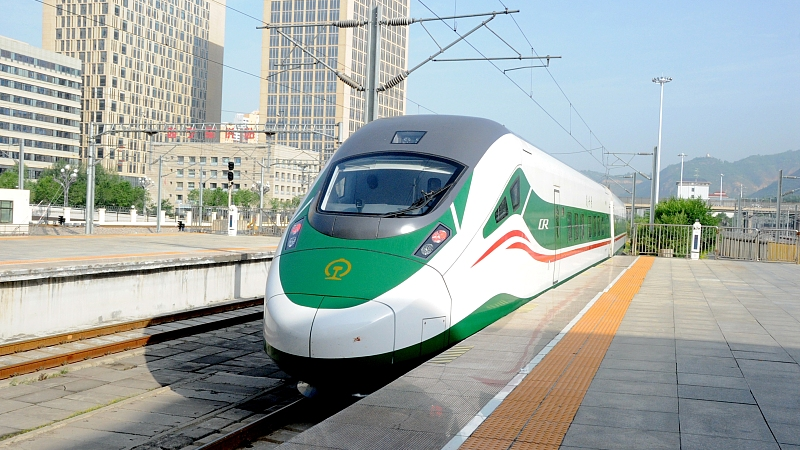
A bullet train on a test run in Xining-Golmud section of the Qinghai-Xizang railway pulls into Xining station in Qinghai Province, June 29, 2023. /CFP
A bullet train on a test run in Xining-Golmud section of the Qinghai-Xizang railway pulls into Xining station in Qinghai Province, June 29, 2023. /CFP
The bullet train starts operation in the Xining-Golmud section of the Qinghai-Xizang railway on Saturday, replacing traditional trains to boost efficiency.
The Qinghai-Xizang railway is a high-elevation railway that connects Xining City in Qinghai Province to Lhasa in the Xizang Autonomous Region in southwestern China. The Xining-Golmud section starts from Xining Station in the east and passes through Huangyuan, Haiyan, Wulan, Delingha to Golmud Station in the west, covering a total operating distance of 829 kilometers.
After the upgrade, the new train, which can travel at a speed of 160 kilometers per hour, will reduce the travel time between Xining and Golmud by approximately one hour.
Running on the Xining-Golmud section, which is located on a plateau, means that the bullet train CR200J Fuxing EMU being used this time is designed to operate in high-altitude and low-temperature environments. Designers have made special arrangements so that the ventilation system can handle significant local temperature differences and strong, sandy winds.
Additionally, designers have utilized the geographical advantages of Qinghai by installing solar panels to absorb prolonged daylight, heat the rails, and protect them from freezing temperatures during winter and at night.
Modifications have also been made to the platforms on the railway section, including the installation of new rain-sheds, fences, and drainage pipelines, to mitigate potential damage caused by local sandy weather and provide a better riding experience for travelers.
Prior to the upgrade, the section could only accommodate traditional trains traveling at speeds of 120-140 kilometers per hour. The improvements began last July to address issues such as corrosion from saline soil and damage to the roadbed and bridges caused by sand.